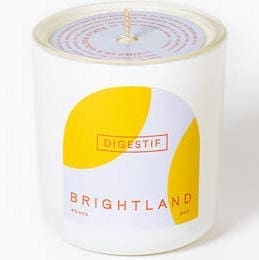Home enrichment is a term that has taken on new meaning throughout the past year. As individuals across the globe were forced to stay at home they started investing in their home to make it feel like a sanctuary versus a place of isolation. While some investments are more permanent, it’s the smaller, accessible indulgences that consumers have gravitated towards and candles have proven to be the perfect vessel to capture a wide range of memories, pleasure and comfort.
A remedy for burnout
In January 2020, Mintel published a blog post on the evolution of self-care and continued to track that evolution throughout the pandemic-induced lifestyle adjustments. Now as we look forward to the “next normal” Mintel 2021 Global Consumer Trend, ‘Health Undefined’ highlights that now more than ever brands need to help consumers navigate a collision of pandemic burnout with everyday lifestyle burnout. Mintel research on managing mental health and wellbeing noted that one in five US consumers expressed they’ve suffered from burnout the past year, as well as three in 10 Millennials, a generation commonly connected with the term burnout. When focusing on broad anxiety, two in five US consumers say they’ve suffered from it the past year and that increases to nearly half among Millennials and more than half for Gen Z.
Candles represent a unique bridge between self-care and the treat yourself mentality because self-care isn’t a singular concept of work versus reward. Rituals have become a common focus the past year as the household chores of cleaning and cooking proved to be the only form of structure and routine consumers could maintain and more than half of US remote workers say that working from home has changed their cooking behavior according to Mintel US research on cooking. This positioned brands to think beyond the surface-level aspects of household chores (getting food on the table, creating a clean surface space, etc.) and instead put a deeper focus on the sensory connections that transform chores into rituals. Mintel Trend, ‘Sense of The Intense’ highlights the motivating factor of a sensory experience for both the brand and customer. Whether it’s scent, flavor, texture or sound, brands have increasingly prioritized these tangible connections, during a time when a majority of experiences are taking place through a digital screen.

Other brands have focused on using candles to bridge the gap that has been created from in-home and away-from-home experiences. Miller Lite launched a very limited edition of Dive Bar Scented Candles. The candles are designed to replicate three scents: Dive Bar, Game Day Bar, and Beer Garden. The candles quickly sold out and the proceeds went towards the hospitality industry via the US Bartenders’ Guild Foundation.
What this means
Innovation doesn’t require reinventing the wheel. Sensory experiential elements have been driving candle purchases for many decades, whether it’s a beach vacation or a winter cabin experience. While the product vessel might remain static, it’s the consumer connection to the product that evolves and redefines its purpose. A June 2020 article in The New Yorker titled, “How the Coronavirus Will Reshape Architecture” stated, “Personal spaces need to be both virtually connected and physically enriching even in the midst of social distancing…” As brands think about how to create a connection between the digital and tangible in the months and years to come, it’s the everyday products like candles that can bridge that gap by connecting wellbeing, experiences, and even identity through a singular product.



















![[WATCH] 2 household care brand innovations tapping into the upcycling ingredient trend](https://www.mintel.com/app/uploads/2022/10/SocialMedia_EMEA_Upycling-Ingredient-Trends_Blog_1000x305-1.jpg)




















